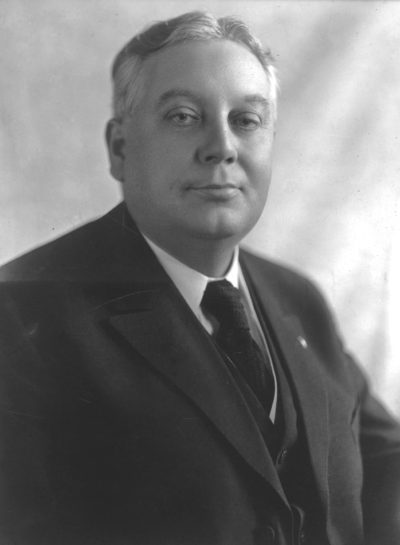
William Harding was the 22nd Governor of Iowa, serving from 1917 to 1921. Photo courtesy of the Sioux City Public Museum, Sioux City, IA
By Jerry Harrington
The case can be made that William L. Harding of Sioux City was perhaps the worst governor in Iowa history.
Harding is probably best known for his infamous Babel Proclamation in 1918 during World War I, declaring that only English could be spoken and written in Iowa, pitting citizen against citizen and casting innocent Iowans as traitors. Harding also issued a controversial pardon of a rapist, later overturned by the courts; for this action, he faced possible impeachment and removal from office after it was discovered money exchanged hands in the process.
Few other governors left office in Iowa under such a cloud of resentment and voter animosity.
The irony is that Harding from Woodbury County in northwest Iowa was a very talented politician, rising through the ranks of the then-dominant Iowa Republican Party and winning election as governor in a landslide in 1916.
A native of Osceola County, Harding was born in 1875, the fourth child in a farm family of nine. Educated in rural schools, he graduated from Morningside College in Sioux City, raced through law school in one year and began practicing law in Sioux City in 1905.
An ambitious young man, Harding immediately entered politics and won election as a Republican to the Iowa House of Representatives from Woodbury County in 1906. With his winning personality, good humor and willingness to work hard, Harding rose through the legislative ranks, becoming one of the most popular and active members of the assembly. After three terms in the Iowa House, Harding used his appealing nature and broad personal connections to win the lieutenant governor’s post in 1912.
The next natural step was the governorship. Winning the Republican primary in 1916, Harding swept into office, having carried 98 of Iowa’s 99 counties with a larger vote total than any previous Iowa gubernatorial candidate.
TO READ MORE ABOUT THIS STORY AND OTHER FASCINATING STORIES ABOUT IOWA HISTORY, subscribe to Iowa History Journal. You can also purchase back issues at the store.
